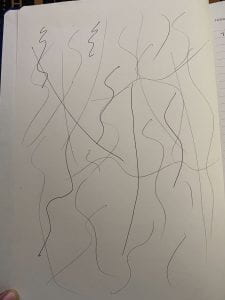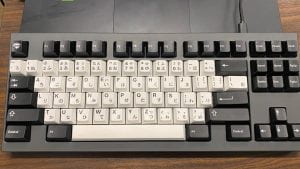Score:
Wake up
Draw a line on a piece of paper
Line length is based on how long you slept
Line straightness is based on how well you slept
Repeat the process every morning on the same piece of paper.
Artist Statement:
I was inspired by Yoko Ono’s Painting by Hammer and Nail and former student Justin Brady’s Dream Paper. In both, of their works, a person repeats an action every day in the morning. I wanted to do something similar, and the idea came to me one morning when I had a terrible night’s sleep that I wanted to make a visual representation of how my sleep went.
The main purpose of the art piece is to ritualistically document your sleep and give the quality/length of your sleep some kind of physical form. The first 2 photos are the month of September-October, and then October-November. The last one (the reason why this is so late) is finals week. The first month is substantially more erratic, as my sleep schedule was really messed up, and I wasn’t sleeping well/going to bed at reasonable hours. The second picture shows a much more reasonable sleep schedule. At the time, I was going to bed around midnight and waking up at like 7-9am. I slept very consistently during that time when I wasn’t sick. The final picture shows finals week (or like this past week since most of my finals were due this week.) As you can see, I only slept 5 out of the 7 days, and the sleep mostly was bad quality and short, except for Wednesday where I took a day off to rest.





